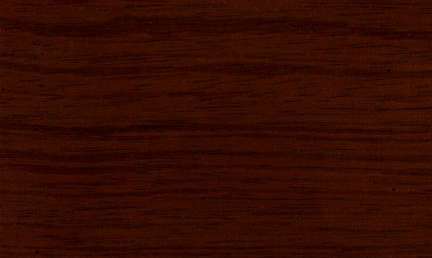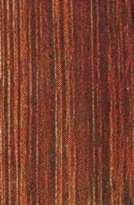 
Rengas (Gluta sp.)
Family: Anacardiaceae
Common names: Black varnish tree, Borneo rosewood, Gluta, Lingas, Rak, Rengas, Straights mahogany, Thayet-thitsi, Thitsi
Distributed in: India, Myanmar, Philippines, Thailand (Oceania and S.E. Asia)
Distribution overview: Indo-Malaysian region (including Thailand and India), reaching into Indonesia and the Philippines, as well as Madagascar. Found in lowland forests and inland peat swamp forests and hills.
Common uses: Cabinetmaking, Decorative veneer, Furniture , Joinery, Specialty items, Turnery, Veneer
Product sources: Several species in the Melanorrhoea and Gluta genera are mixed and marketed together under the trade name Rengas.
Environment profile: Status unsure as a result of insufficient information
Tree size: Trunk diameter is 100-150 cm
Colors: the heart isBrown, Whiteand the sapwoodWhite, White to yellow.The grain isStraight to irregular, the textureUniformand the lusterLow
Natural durability: Sapwood susceptible to attack by powder post beetles, Somewhat susceptible to attack by termites
Odor: No specific smell or taste
Silica Content: Likely to have significant impact on machining
Drying Defects: Checking, Splitting
Ease of Drying: Reconditioning Treatement
Blunting Effect: Cutting edges are dulled rapidly and severely
Dulling of cutting edges can be rather severe because of silica content
Boring: Fairly easy to very easy
Carving: Fairly Easy to Very Easy
Cutting Resistance: Easy to saw
Gluing: Fair to Good Results
Mortising: Fairly Easy to Very Easy
Moulding: Fairly Easy to Very Easy
Movement in Service: Fairly Easy to Very Easy
Nailing: Poor to Very Poor , Pre-Boring Recommended
Planing: Yields smooth surfaces
Resistance to Impregnation: Sapwood is permeable
Response to hand tools: Yields a smooth surface with hand tools
Routing recessing: Fairly Easy to Very Easy
Sanding: Very Good to Excellent Results
Steam bending: Unsuitable
Turning: Fairly Easy to Very Easy
Polishing: Takes a high finish; Staining: Fairly Easy to Very Easy;
- Numerical data Metric
- Numerical data English
- Strength properties
- References
 |
 |
 |
 |
| Item |
Green |
Dry |
Metric |
| Specific Gravity |
0,58 |
|
|
| Density |
|
737 |
kg/m3 |
| Bending Strength |
702 |
902 |
kg/cm2 |
| Crushing Strength |
183 |
577 |
kg/cm2 |
| Hardness |
|
764 |
kg |
| Impact Strength |
|
|
cm |
| Shearing Strength |
|
|
kg/cm2 |
| Stiffness |
117 |
131 |
1000 kg/cm2 |
| Tangential Shrinkage |
|
|
% |
| Radial Shrinkage |
3 |
|
% |
| Weight |
721 |
592 |
kg/m3 |
| Maximum Load |
|
|
cm-kg/cm3 |
| Toughness |
|
|
cm-kg |
| Static Bending |
|
|
kg/cm2 |
|
 |  |  |  | | Item | Green | Dry | English | | Bending Strength | 9998 | 12833 | psi | | Density | | 46 | lbs/ft3 | | Hardness | | 1686 | lbs | | Maximum Crushing Strength | 2613 | 8212 | psi | | Stiffness | 1671 | 1877 | 1000 psi | | Specific Gravity | 0.58 | | | | Weight | 45 | 37. | lbs/ft3 | | Radial Shrinkage | 3 | | % | | Tangential Shrinkage | 5 | | % | |
Max. crushing strength = low
Heavy
Bending strength (MOR) = low
Rengas is heavy and dense. It has low strength properties in bending and crushing, and is very low in stiffness and resistance to shock loads.
Chudnoff, M.,1984,Tropical Timbers of the World,U.S.A. Department of Agriculture, Forest Service, Forest Products,Laboratory, Madison.Desch, H. E. 1957. Manual of Malayan Timbers - Volume I. Malayan Forest Records, No. 15. Malaya Publishing House Ltd., Singapore.Desch, H. E. 1957. Manual of Malayan Timbers. Malayan Forest Records, 28(30):315-318.Keating, W.G., Bolza, E.,1982,Characteristics properties and uses of timbers. South East Asia, Northern,Australia and the Pacific,C.S.I.R.O. Div. Chemical Technology,Inkata Press,1Kloot, N. H. and E. Bolza.1961.Properties of Timbers Imported into Australia.Technological Paper No. 12.Division of Forest Products, Commonwealth Scientific & Industrial Research Organization, Melbourne, Australia.Limaye, V.D.1954. Grouping of Indian Timbers and their Properties, Uses and Suitability. Indian Forest Records, New Series. Timber Mechanics, Vol. 1, No. 2, Forest Research Institute, Dehra Dun, India.Limaye, V.D. and B.R. Sen. 1953. Weights and Specific Gravities of Indian Woods. Indian Forest Records, New Series. Timber Mechanics, Vol. 1, No. 4, Forest Research Institute, Dehra Dun, India.Lincoln, W.A. 1986. World Woods in Color. Linden Publishing Co. Inc., Fresno, California.WCMC. 1992. Conservation Status Listing - Trees and Timbers of the World. World Conservation Monitoring Center-Plants Programme, Cambridge, CB3 ODL, United Kingdom.
|









